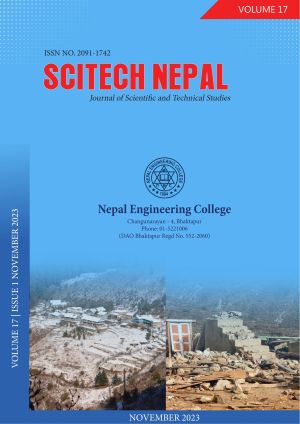Effect of Steel Jacketing Thickness on Seismic Performance of Bridge
DOI:
https://doi.org/10.3126/scitech.v17i1.60457Keywords:
Seismic Performance, Fragility curve, Damage state, Pushover analysis, Time history analysis, Steel JacketingAbstract
The bridges of Nepal are getting older and old bridges were designed without considering the seismic forces, hence have low seismic capacity. The capacity of these bridges needs to be enhanced and should perform well during seismic events. The jacketing technique can be used to upgrade the bridge's structural performance. This research paper mostly focuses on the seismic performance enhancement after the application of steel jacketing on the bridge pier. The variable that has been varied is the thickness of the steel jacket. The capacity of a bridge pier is evaluated using displacement-controlled nonlinear static analysis (Pushover). The time history load is applied to the structure to determine the seismic demand of the bridge. The quantification of the enhancement of the bridge structure after the application of Steel Jacketing is evaluated by plotting the fragility curve. The modeling of the bridge is done in CSI Bridge V20.2.0. The different damage state is defined using the strain values obtained from the pushover analysis. For different damage states, the capacity and demand value are used to obtain the probability of exceeding at different PGA levels. The fragility curve is developed using the First Order Second Order Method (FOSM). From the study, it is found, that the vulnerability of the bridge after the use of jacketing for extensive damage state, the probability of failure reduced from 28.22% to 14.24% at 1.0g PGA. Similarly, the vulnerability of the bridge after the use of jacketing for collapse damage state, the probability of failure decreased from 16.93% to 7.22% at 1.0 PGA




